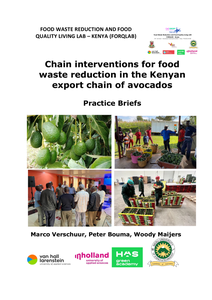Waste disposal management and the energy crisis are important challenges facing most countries. The fruit-processing industry generates daily several tons of wastes, of which the major share comes from banana farms. Anaerobic digestion (AD) technology has been applied to the treatment of wastewater, animal slurry, food waste, and agricultural residues, with the primary goals of energy production and waste elimination. This study examines the effect of organic loading (OL) and cow manure (CM) addition on AD performance when treating banana peel waste (BPW). The maximum daily biogas production rates of banana peels (BPs) with a CM content of 10%, 20%, and 30% at 18 and 22 g of volatile solids (gvs) per liter were 50.20, 48.66, and 62.78 mL·(gvs·d)−1 and 40.49, 29.57, and 46.54 mL·(gvs·d)−1, respectively. However, the daily biogas yield showed no clear interdependence with OL or CM content. In addition, a kinetic analysis using first-order and cone models showed that the kinetic parameters can be influenced by the process parameters.
LINK
Polycyclic aromatic hydrocarbons (PAHs) are a group of more than hundred compounds that are ubiquitous in our environment. Some of these PAHs are known to be carcinogenic, mutagenic and teratogenic. PAHs have been detected in dried herbs that were cultured in The Netherlands as well as in other European countries above the maximum levels in dried herbs set by the EU (EU, 2015) for benzo(a)pyrene and the sum of the following four PAHs benzo(a)pyrene, benzo[a]anthracene, benzo[b]fluoranteen and chrysene. The origin of these PAHs in herbs is unknown. VNK cultivates, harvests and dries herbs including valerian and would like to identify the source of PAHs to comply to the EU limits for PAHs in herbs. The goal of the present study was to identify the source of PAHs found in valerian root, and to identify possible measures to reduce the concentration of PAHs in valerian root.
DOCUMENT

This booklet presents the practice briefs (popular papers) of master and bachelor theses and business assignments of students at three Dutch Universities of Applied Sciences: Van Hall Larenstein (VHL), InHolland and HAS Green Academy, and Meru University of Science and Technology in Kenya. All theses and business assignments were commissioned through the researchproject entitled “Food Waste Reduction and Food Quality Living Lab (FORQLAB)” in Kenya.
DOCUMENT

This magazine presents the highlights of the applied research project “Inclusive and climate-smart business models in Ethiopian and Kenyan dairy valuechains (CSDEK)”. The CSDEK applied research project was conducted in six case study areas, three in Ethiopia and three in Kenya. At the time of publishing this magazine, research was still ongoing in some of the study areas. The projectteam and researchers hope to contribute to creating awareness of climatesmartdairy practices and development of the dairy sector in Ethiopia and Kenya. In two of the study areas, collaboration between VHL and dairy stakeholders will continue, preferably through local networks in a Living Lab approach.
DOCUMENT
